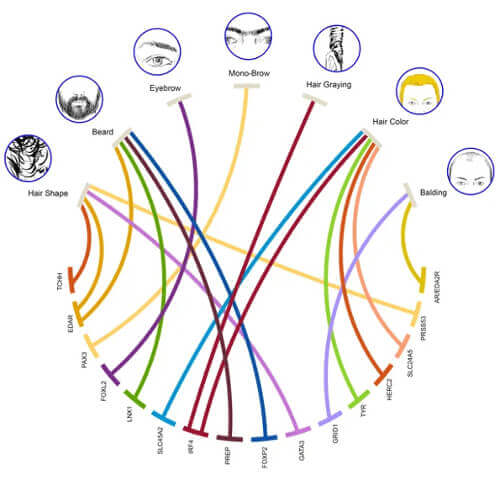September 22, 2023
A new study analyzed the contribution of rare variants to male pattern hair loss (MPHL) etiology. The research team performed gene-based and single-variant analyses in exome-sequencing data from 72,469 male UK Biobank participants. While rare variants make only a minor contribution to general MPHL risk, the scientists identified a total of five significant gene associations.
January 10, 2023
Humans Still Have the Genes for a Full Coat of Body Hair
Several readers recently sent me links to new findings in relation to human and mammalian hair genes. Apparently, human still have the genes for a full coat of hair (or fur), which is not surprising to me. I have no shortage of body hair, although the hair on my back is mostly fine non-terminal hair. Men with excessive body hair tend to go bald more extensively and at a younger age.
The scientists (Dr. Nathan Clark, Dr. Amanda Kowalczyk and Dr. Maria Chikina) behind this latest work state that:
“It could eventually lead to new ways to recover hair after balding”.
This study was a first-of-its-kind comparison of genetic codes from so many animals (62). The research team surveyed 19,149 genes and 343,598 regulatory regions across the mammalian species. It is quite extraordinary that so many different mammals (including humans) have used different strategies to deactivate a common set of genes. All in order to shed their hair and fur.
Make sure to also read my posts on CRISPR and on gene modification via NgAgo.
March 1, 2016
Hair Related Genes
A major discovery was just announced today and widely covered by the global media (e.g., see the BBC article, Telegraph summary and Washington Post article).
The main Nature Communications human hair genome diagram pasted below is quite a visual.

Key genes for grey hair, monobrows, hair thickness, hair shape and more were discovered by a team led by Dr. Kaustubh Adhikari. The global media has largely focused on the grey hair issue.
Interestingly, the team did all their research in Latin America, the global hotspot of human genetic diversity due to the region’s large populations of Caucasoids/Whites, Natives/Indians and Negroids/Blacks. Brazil is also home to the largest population of Japanese (Mongoloids) outside of Japan. An impressive 6,630 volunteers were studied. Key discoveries:
- The IRF4 gene’s presence seems correlated with an earlier loss of hair color. Also see my posts on the cure for grey hair and grey hair reversal.
- Unibrows (or monobrows) are associated with a gene called PAX3.
- The EDAR gene is associated with straight scalp hair and sparse facial hair — both of which are common features in East Asian men.
- The PRSS53 gene is linked to curly hair.
Some interesting quotes:
“The finding could mean that changing hair or eye color could be possible without using dyes. It would simply be a matter of taking a drug which changed the expression of certain genes to alter appearance, turning blondes into brunettes or preventing grey hair.”
“Preventing grey hair is a possibility and even reversing grey hair might not be impossible. Once we know more about the pigmentation process, and all the genes involved it should be easy to find a protein or enzyme to up-regulate or down-regulate the activity.”
One interesting implication for the cosmetics industry is that hair appearance could in the future be modified as it is formed underneath the skin. As opposed to after exiting from the skin surface, which is the current norm with hair dyes and hair straighteners.